Vitiligo Treatment
Vitiligo is a skin condition causing white patches due to loss of pigment. Get expert Vitiligo treatment at Derma Solutions with advanced therapies, personalized care, and effective solutions to restore skin tone. Book your consultation today for healthy skin!


Vitiligo is often considered an autoimmune disease because it involves the immune system mistakenly attacking melanocytes, the cells responsible for producing skin pigment. However, the exact cause of vitiligo is still not entirely understood, and it may involve a combination of genetic, autoimmune, and environmental factors. In autoimmune diseases, the immune system mistakenly targets and attacks healthy cells or tissues in the body. In the case of vitiligo, it results in the loss of pigment-producing cells in the skin, leading to patches of depigmented skin. While it shares some features with autoimmune diseases, the exact mechanisms underlying vitiligo are complex and continue to be studied.
Types of Vitiligo
Vitiligo is a skin condition characterized by the loss of pigment, leading to white patches on the skin. The types of vitiligo include:
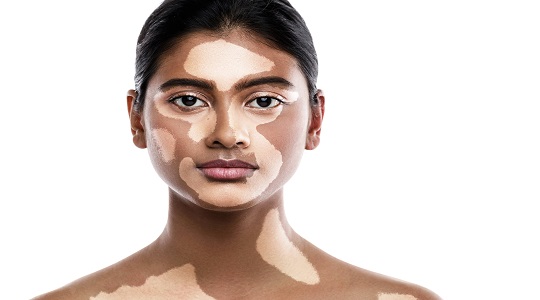
Generalized Vitiligo
- The most common type of vitiligo.
- Causes macules (white patches) to appear in various places on the body.
- Often symmetrical and can affect any area, including the face, hands, and feet.

Segmental Vitiligo
- Affects only one side of the body or a specific area, such as the face or hands.
- Usually occurs at a younger age.
- Tends to spread for a year or two and then stops progressing.
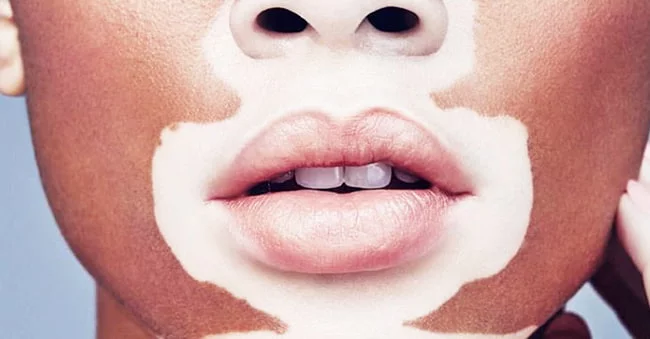
Mucosal Vitiligo
- Affects the mucous membranes of the mouth and/or genitals.
- May occur alongside other types of vitiligo.
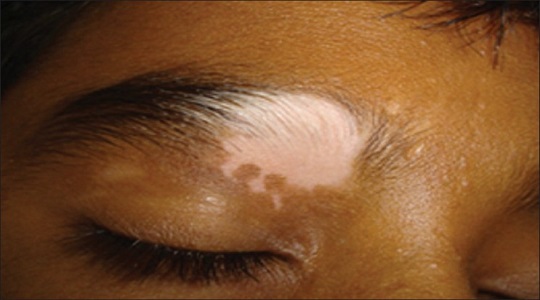
Focal Vitiligo
- A rare type where macules develop in a small, localized area.
- The patches do not spread in a specific pattern within one to two years.
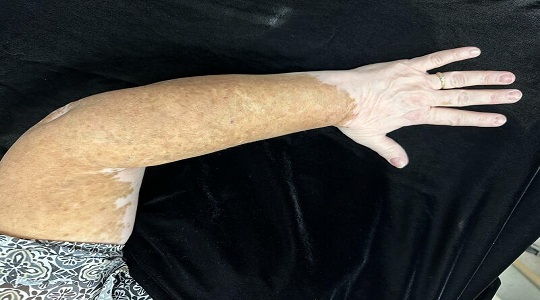
Trichrome Vitiligo
Creates a bullseye appearance with three zones:
- White or colorless center
- Area of lighter pigmentation
- Natural skin tone on the outer edge.
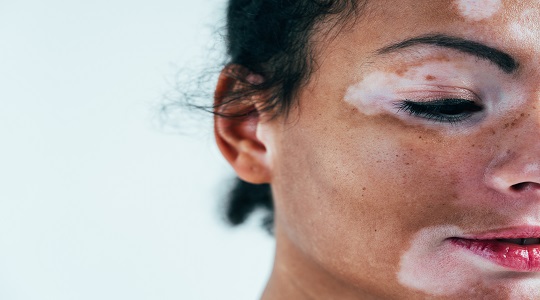
Universal Vitiligo
- A rare and severe form of vitiligo.
- Causes loss of pigment in more than 80% of the body.
- Can affect hair and mucous membranes as well.
Who is at the risk of developing a Vitiligo?
You may have a higher risk for developing a skin rash if you:

Have a family history of vitiligo.

Have an autoimmune disease such as thyroid disorders, diabetes, or rheumatoid arthritis.

Experience excessive stress, which can trigger or worsen the condition.

Have a history of skin trauma, sunburns, or chemical exposure.

Have hormonal imbalances.
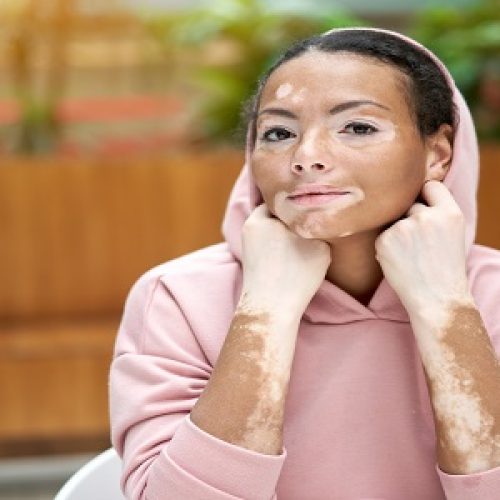
Vitiligo caused by?
Vitiligo is believed to result from a combination of genetic, environmental, and immune system factors. The exact cause is unknown, but potential factors include:
- Autoimmune Response: The immune system mistakenly attacks melanocytes (cells that produce pigment), leading to white patches on the skin.
- Genetic Factors: About 20-30% of people with vitiligo have a family history of the condition, suggesting a genetic predisposition.
- Environmental Triggers: Factors like severe sunburn, emotional stress, or exposure to chemicals may trigger or worsen vitiligo in genetically predisposed individuals.
- Neurogenic Factors: A toxic substance released at nerve endings may damage melanocytes.
Vitiligo Treatment Options
There is no definitive cure for vitiligo, but various treatment options can help restore skin color or slow the progression of the disease:
Topical Treatments:
- Corticosteroid creams to reduce inflammation and promote repigmentation.
- Calcineurin inhibitors to suppress the immune response affecting pigment cells.
Phototherapy:
- Narrowband UVB therapy is one of the most effective treatments, stimulating melanocyte activity.
- PUVA therapy combines UVA light exposure with a photosensitizing medication.
Depigmentation Therapy:
- Used in extensive vitiligo cases, this method lightens the remaining skin to match the depigmented areas.
Micropigmentation (Tattooing):
- A cosmetic approach where pigments are applied to blend with natural skin color.
Surgical Treatments:
- Skin grafting: Transplanting pigmented skin to affected areas.
- Cellular suspension transplant: Melanocyte transplantation to restore skin color.
Lifestyle and Home Remedies:
- Using sunscreen to protect depigmented areas from sun damage.
- Wearing protective clothing and using camouflage makeup.
- Stress management techniques, as emotional stress can trigger or worsen vitiligo.
Vitiligo Symptoms
Symptoms vary depending on where the infection occurs.
- Patchy Loss of Skin Color
- Premature Hair Graying
- Loss of Color in Mucous Membranes
- Retinal Color Changes: In the inner layer of the eye
Book your experience
Our expert team is ready to help you achieve radiant, healthy skin with treatments tailored just for you.
Enhance your beauty
Reveal your natural glow with expert beauty treatments designed to enhance your confidence.

Book an appointment

Get your schedule

Meet with our expert





